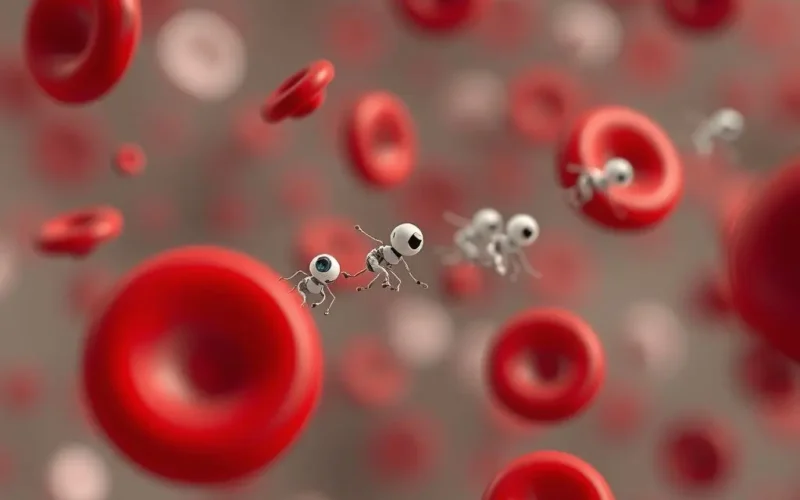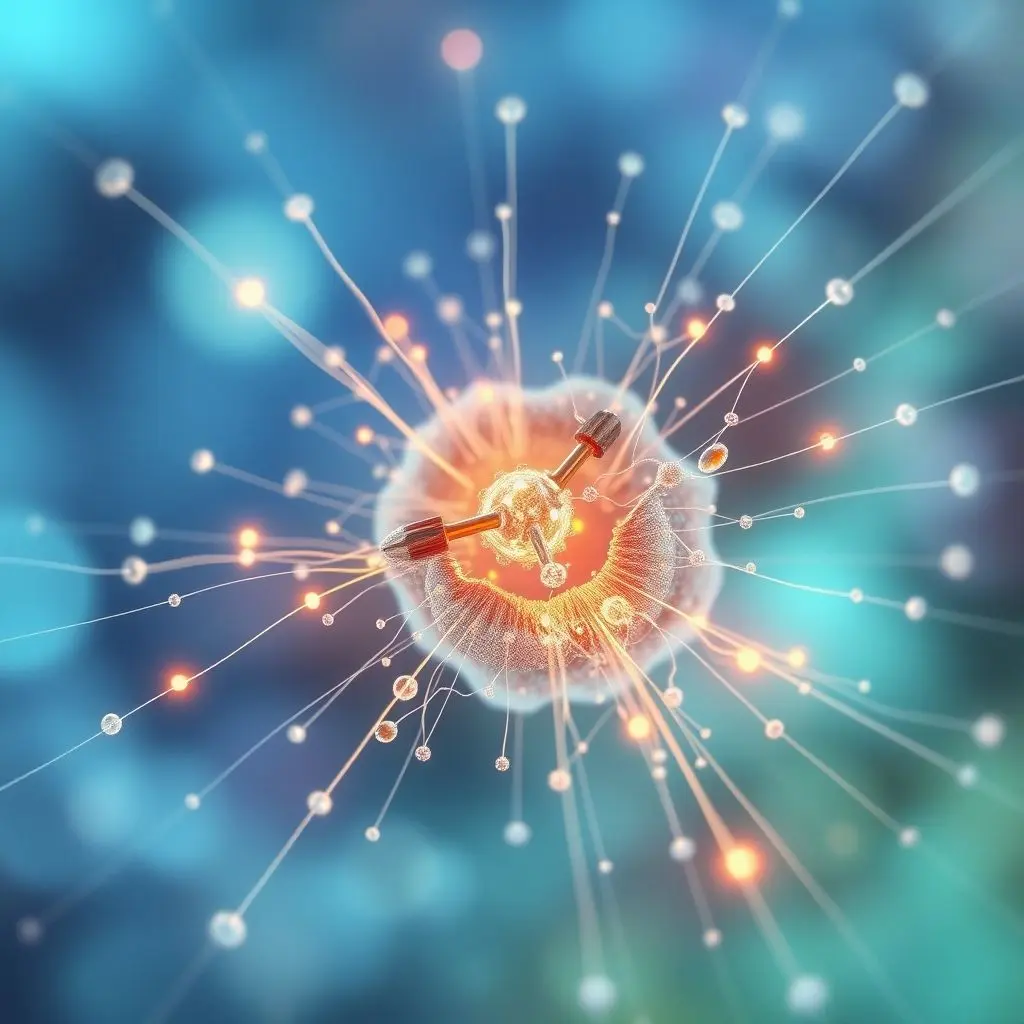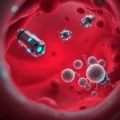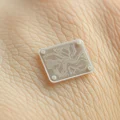Picture this: not a surgeon’s scalpel or a doctor’s pill, but an army of miniature medics patrolling your insides, fixing you from the ground up. It sounds like something straight out of science fiction, doesn’t it? But this isn’t just a wild dream; it’s the core idea behind a revolutionary frontier in medicine: using nanotechnology to repair our bodies from within.
We’re talking about building incredibly tiny devices – sometimes dubbed ‘nanobots’ – scaled to the molecular level. The potential here is nothing short of mind-blowing: sending these internal mechanics on a mission to repair damaged cells, seek and destroy diseases like cancer one cell at a time, or deliver powerful medicines precisely where they’re needed, dramatically reducing nasty side effects on healthy tissue.
At its heart, this vision is about giving your body’s own amazing healing processes a high-tech, microscopic helping hand. It’s about unlocking precision healing that targets illness with unprecedented accuracy.
Table of Contents
Seeing the Vision: A Quick Look Inside
Sometimes, seeing is believing, even when what you’re seeing is smaller than a blood cell. We put together a short video that offers a glimpse into this futuristic possibility. Take a look!
(Please note: The video ID ‘YOUR_SHORTS_VIDEO_ID’ needs to be replaced with the actual YouTube Shorts ID for the embed to work.)
What Exactly is Nanotechnology in Medicine?
Before we delve deeper into the ‘how’, let’s clarify what we mean by nanotechnology in this context. Nano refers to a nanometer, which is one-billionth of a meter. To put that in perspective, a human hair is about 80,000 to 100,000 nanometers wide. We’re talking about manipulating materials and building devices on an incredibly tiny scale – the scale of molecules and atoms.
In medicine, this means developing tools, devices, and systems that can interact with biological matter at this cellular and sub-cellular level. This isn’t necessarily building complex robots (though that’s the sci-fi dream of ‘nanobots’), but could involve using nanoparticles for drug delivery, nanoscale sensors for diagnosis, or nanoscale structures for tissue engineering.
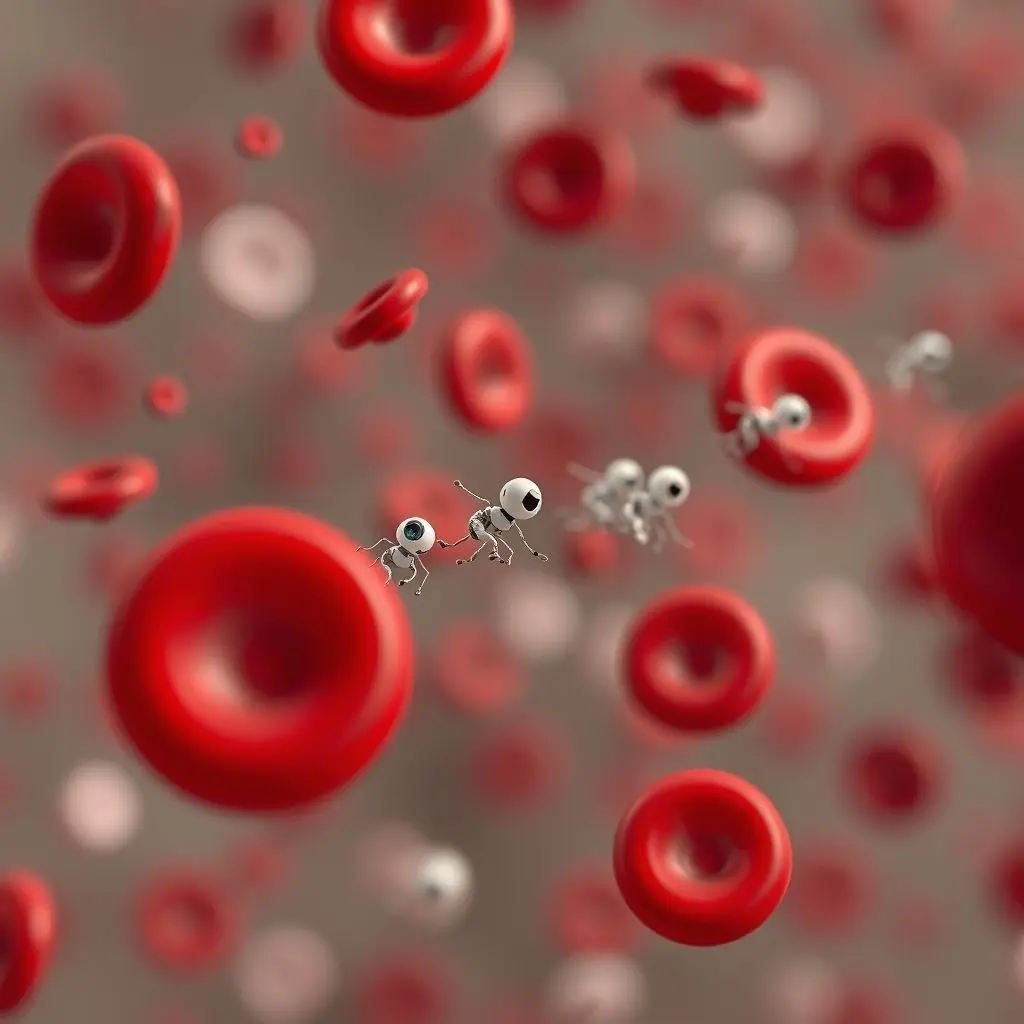
Unlocking Potential: How Could Nano-Repair Work?
The possibilities are vast and exciting. Here are some of the key areas researchers are actively exploring:
Precision Drug Delivery
Imagine a chemotherapy drug designed to kill cancer cells. Current methods involve injecting the drug into the bloodstream, where it travels throughout the body, harming healthy cells and causing severe side effects like hair loss, nausea, and fatigue. With nanotechnology, drugs could be encased in tiny nanoparticles or attached to nanoscale carriers programmed to target *only* cancer cells. These carriers could have surface molecules that bind specifically to markers found on cancer cells, releasing the drug only at the tumor site. This could revolutionize treatment by increasing efficacy and dramatically reducing collateral damage.
Cellular-Level Disease Fighting (Beyond Cancer)
While cancer is a major focus, the concept extends to other diseases. Nanoscale devices could potentially:
Identify and neutralize viruses or bacteria.
Break up arterial plaque contributing to heart disease.
Cleanse the bloodstream of toxins.
The ability to interact directly with pathogens or disease-causing structures at their foundational level opens up entirely new therapeutic avenues.
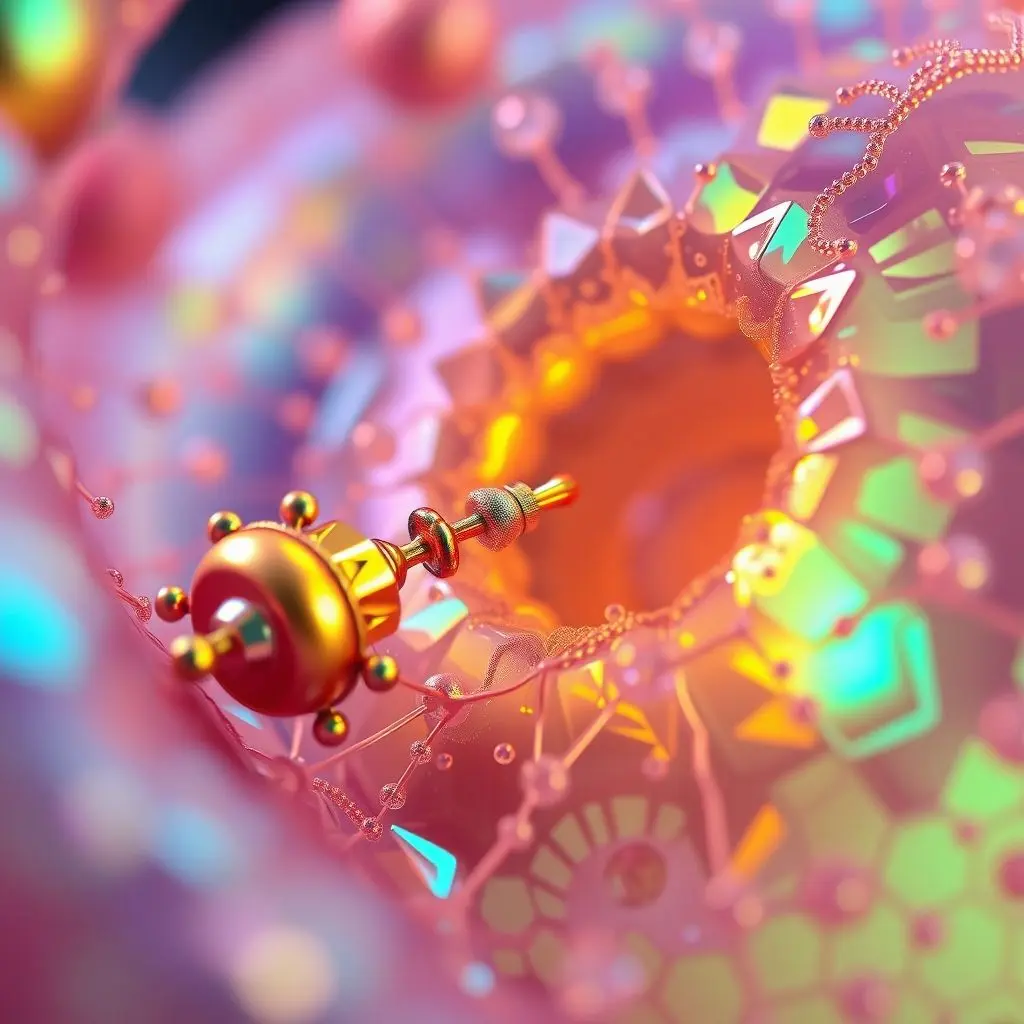
Repairing Damaged Tissues and Cells
This is where the ‘internal repair’ concept really shines. Nanotechnology could potentially:
Assist in repairing damaged cell membranes or internal organelles.
Deliver genetic material for gene therapy directly into target cells.
Provide scaffolds for tissue regeneration, guiding cell growth in damaged areas.
Potentially aid in nerve repair by bridging gaps or stimulating regrowth – a massive challenge in conditions like spinal cord injuries.
This level of precision repair could help restore function lost due to injury, disease, or even age-related degeneration.
Tackling Age-Related Decline?
While full ‘reversal’ of aging remains firmly in the realm of speculation and science fiction, understanding and potentially repairing cellular damage could address some of the biological processes associated with aging. Repairing telomere shortening, clearing cellular debris (like amyloid plaques in Alzheimer’s), or fixing mitochondrial dysfunction are areas where nanoscale interventions *might* play a role in the very long term. However, this is highly complex and far more speculative than targeted drug delivery or some forms of cellular repair.
Where Are We Now? The Research Landscape
So, are microscopic repair crews already being injected into patients? Not quite. While the concept of complex, autonomous ‘nanobots’ navigating and repairing our bodies like tiny mechanics is still largely aspirational, the field of nanomedicine is very real and progressing rapidly.
Current research and clinical trials are focused on:
Nanoparticles for Drug Delivery: This is perhaps the most advanced area, with various nanoparticle-based therapies already in clinical use or trials for cancer, infectious diseases, and other conditions.
Nanoscale Diagnostics: Developing tiny sensors that can detect disease markers in blood or tissues at very early stages.
Nanomaterials for Implants and Tissue Engineering: Using nanoscale structures to improve compatibility and integration of medical implants or to create scaffolds for growing new tissues.
The dream of complex, programmable nanobots for intricate repair is being explored in laboratories worldwide, but significant scientific and engineering hurdles remain.

Challenges on the Path Forward
Bringing the vision of nano-repair to reality involves overcoming substantial challenges:
Biocompatibility: Ensuring these materials and devices don’t trigger a harmful immune response or cause toxicity in the body.
Control and Navigation: How do we precisely control trillions of tiny devices once they are inside the complex environment of the human body?

Powering the Nanobots: How would these microscopic machines get the energy they need to perform tasks?
Manufacturing: Producing these complex nanoscale devices in sufficient quantities and with high reliability is a monumental engineering challenge.
Safety and Ethics: What are the long-term effects? Who controls this technology? How do we ensure equitable access?
Frequently Asked Questions (FAQs)
Q: Are ‘nanobots’ real today?
A: The simple answer is ‘not in the way you might imagine from sci-fi movies’. We have nanoscale technologies like nanoparticles used for drug delivery, but complex, autonomous robotic nanobots capable of intricate repairs inside the body are still largely theoretical and in early research phases.
Q: Is this technology safe?
A: Safety is a primary concern and a major focus of current research. Ensuring biocompatibility – that the body doesn’t react negatively to these materials – is crucial. Extensive testing will be required before any complex nano-repair systems could be used in humans.
Q: When could nano-repair become a reality?
A: Simple nanomedicine applications like targeted drug delivery are already in use or advanced clinical trials. More complex applications like intricate internal repair could be decades away, requiring significant breakthroughs in engineering, control systems, and biological interaction.
Q: What diseases could nano-repair potentially treat?
A: The potential is broad, including various cancers, cardiovascular diseases, neurological disorders (like nerve damage), infectious diseases, and conditions requiring tissue regeneration.
The Journey Continues
The idea of using technology to mend our bodies from the inside out represents one of the most audacious goals in medicine. While autonomous nano-repair machines are not yet a reality, the foundational research in nanomedicine is laying the groundwork for a future where treatment is more precise, less invasive, and incredibly effective.
It’s a future where illness might find no permanent home, thanks to tiny hands performing a cellular quest within. The journey is long, filled with complex challenges, but the potential rewards – healthier, longer lives – make it one of the most exciting frontiers of scientific exploration.
